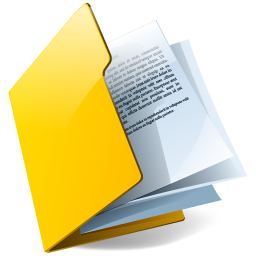Mathematics
Download CBSE class 4 Mathematics study material in PDF format. MyCBSEguide provides solved papers, board question papers, revision notes and NCERT solutions for CBSE class 4 Mathematics. The topics included are Number System, Addition and subtraction, Multiplication and division, Factors Multiples Estimation, Patterns and symmetry, Fractional Numbers, Decimal Numbers, Geometrical Shapes, Measurement, Money, Time and calender and Data Handling.

CBSE, JEE, NEET, CUET
Question Bank, Mock Tests, Exam Papers
NCERT Solutions, Sample Papers, Notes, Videos

myCBSEguide App
Complete Guide for CBSE Students
NCERT Solutions, NCERT Exemplars, Revison Notes, Free Videos, CBSE Papers, MCQ Tests & more.
Download CBSE class 4 Mathematics study material in PDF format. MyCBSEguide provides solved papers, board question papers, revision notes and NCERT solutions for CBSE class 4 Mathematics. The topics included are Number System, Addition and subtraction, Multiplication and division, Factors Multiples Estimation, Patterns and symmetry, Fractional Numbers, Decimal Numbers, Geometrical Shapes, Measurement, Money, Time and calender and Data Handling.
SHAPES & SPATIAL UNDERSTANDING
• Draws a circle free hand and with compass.
• Identifies centre, radius and diameter of a circle.
• Uses Tangrams to create different shapes.
• Tiles geometrical shapes: using one or two shapes.
• Chooses a tile among a given number of tiles that can tile a given region both intuitively and experimentally.
• Explores intuitively the area and perimeter of simple shapes.
• Makes 4-faced, 5-faced and 6-faced cubes from given nets especially designed for the same.
• Explores intuitively the reflections through inkblots, paper cutting and paper folding.
• Reads and draws 3-D objects, making use of the familiarity with the conventions used in this.
• Draws intuitively the plan, elevation and side view of simple objects.
Numbers
NUMBERS AND OPERATIONS
• Writes multiplication facts.
• Writes tables upto 10 × 10.
• Multiplies two and three digit numbers using lattice algorithm and the standard (column) algorithm.
• Divides a given number by another number in various ways such as:
– by drawing dots.
– by grouping.
– by using multiplication facts.
– by repeated subtraction.
• Applies the four operations to life situations.
• Frames word problems.
• Estimates sums, differences and products of given numbers.
MENTAL ARITHMETIC
• Adds and subtracts multiples of 10 and 100, mentally.
• Completes multiplication facts by adding partial products, mentally (e.g. 7 × 6 = 5 × 6 + 2 × 6).
FRACTIONAL NUMBERS
• Identifies half, one fourth and three- fourths of a whole.
• Identifies the symbols.
• Appreciates equivalence.
Money
MONEY
• Converts Rupees to Paise.
• Adds and subtracts amounts using column addition and subtraction with regrouping.
• Uses operations to find totals, change, multiple costs and unit cost.
• Estimates roughly the totals and total cost.
Measurement
LENGTH
• Relates metre with centimetre;
• Converts metre into centimetres and vice versa.
• Solves problems involving length and distances.
• Estimates length of an object and distance between two given locations. WEIGHT
• Weighs objects using a balance and standard units.
• Determines sums and differences of weights.
• Estimates the weight of an object and verifies using a balance.
VOLUME
• Measures volumes of given liquid using containers marked with standard units.
• Determines sums and differences of volumes.
• Estimates the volume of a liquid contained in a vessel and verifies by measuring.
TIME
• Computes the number of weeks in a year.
• Correlates the number of days in a year with the number of days in each month.
• Justifies the reason for the need of a leap year.
• Reads clock time to the nearest hours and minutes.
• Expresses time, using the terms, ‘a.m.’ and ‘p.m.’
• Estimates the duration of familiar events.
• Finds approximate time elapsed by (to the nearest hour) forward counting.
• Computes the number of days between two dates.
Data Handling
• Collects data and represents in the form of bar graphs;
• Draws Inferences by discussing with the teacher.
Patterns
• Identifies patterns in multiplication and division: multiples of 9,
• Casts out nines from a given number to check if it is a multiple of nine.
• Multiplies and divides by 10s, 100s. Identifies geometrical patterns based on symmetry.

myCBSEguide
Trusted by 1 Crore+ Students

Test Generator
Create papers online. It's FREE.

CUET Mock Tests
75,000+ questions to practice only on myCBSEguide app
 myCBSEguide
myCBSEguide



